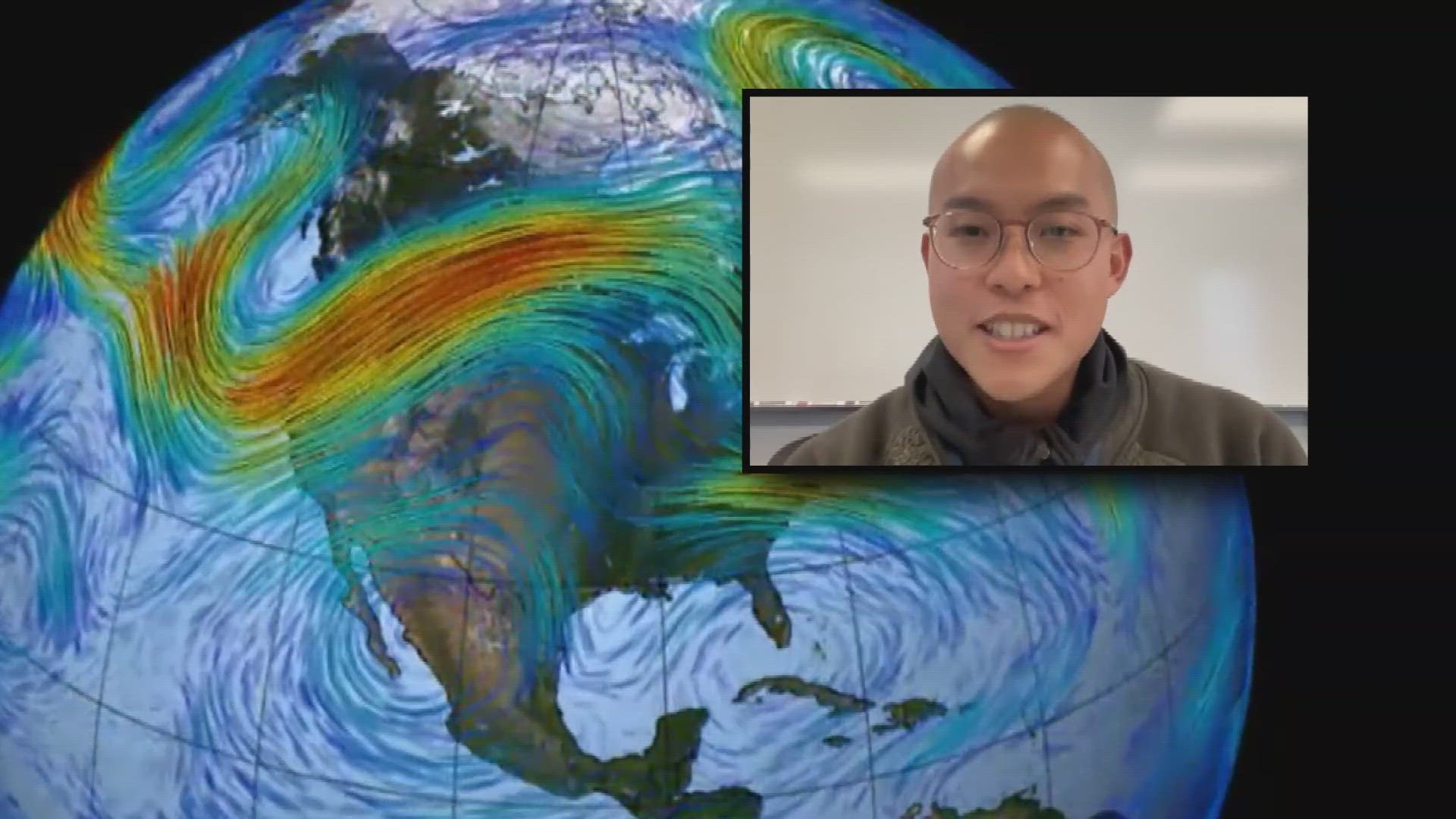BOULDER, Colo. — There’s a river of air thousands of feet above our heads called the jet stream. And new research shows that the peak wind speeds in the jet stream are getting faster as the atmosphere warms.
“Surprisingly, our finding shows that it’s not really the temperature but it’s the moisture,” said Osamu Miyawaki, a research scientist at the National Center for Atmospheric Research. (NCAR).
He said the warmer the atmosphere gets the more moisture it can hold. So, more heat leads to more water vapor which leads to faster winds.
Miyawaki teamed up with University of Chicago professor Tiffany Shaw on a new research project that showed with every degree Celsius (1.8 degrees Fahrenheit) of warming, the peak jet stream winds increase by 2%.
He said we could see wind speeds near 250 mph if climate change continues and the atmosphere warms by one more degree. That would be about 20 mph faster than the peak wind speeds in 1979.
A faster jet stream could contribute to more extreme weather like hail, tornadoes and flash floods. And even downslope high wind events like the one that led to Marshall Fire in December 2021.
“So, the faster the winds aloft are, the more potential and energy there could be going into these downslope wind events that cause 100 mph gusts," said Miyawaki. "And if it’s combined with really dry conditions, it could lead to fire risk.”
The jet stream also happens to be at about the height that airplanes travel. He said faster peak winds would create more extreme wind shear by mixing with slower winds nearby.
“And that mixing or eddying motion over time begins to grow into larger waves," he said. "And those waves are what we feel as turbulence or rough motion in airplanes.”
That could especially impact a place like Denver which is already known for bumpy liftoffs and landings.
“Between the down sloping winds and the clear air turbulence, we’re locally in a very important region to detect this and understand what’s going to happen with the projection that jet stream winds will get faster.”
Faster jet stream winds would also shorten air travel from west to east since that's the direction of the winds. The flight from New York to London for example takes on average about six and a half hours, but aided by an extremely fast jet stream, that flight time can be reduced by more than an hour.
Miyawaki said that in the future shortened trans-Atlantic flight is projected to happen twice as much as it does today.
SUGGESTED VIDEOS: Colorado Climate

